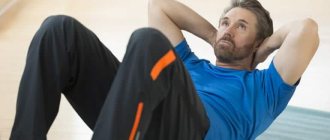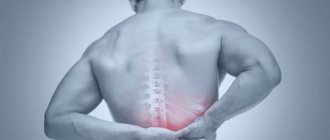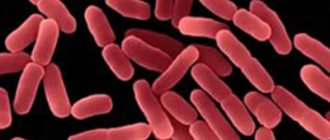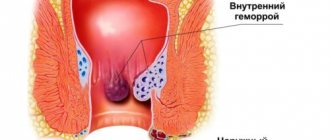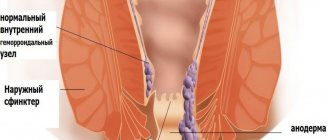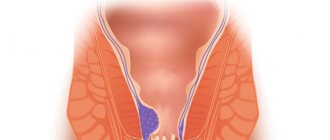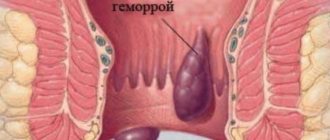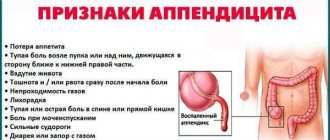The initial stage of hemorrhoids is practically asymptomatic. The disease proceeds secretly, without acute manifestations. Hemorrhoids (“bumps”) are invisible, located under the skin, and painless. Less common is bleeding or blood in the stool. What hemorrhoids look like in the initial stage depends on its shape: external or internal.
Treatment of hemorrhoids in the early stages includes a number of changes in daily life, proper nutrition, drug therapy, and, if necessary, minimally invasive methods (sclerotherapy, infrared coagulation). Diagnosis and treatment are carried out only by a proctologist. Let's consider the features of the early stage of pathology: causes, symptoms, methods of diagnosis and prevention.
Hemorrhoids are varicose veins of the rectum
Causes
With a problem such as hemorrhoids, the initial stage often occurs with a lack of physical activity. In women it appears during pregnancy or after childbirth.
Predisposes to disease:
- genetic (hereditary) factor;
- long sedentary work;
- frequent constipation;
- impaired diet (fatty, spicy, salty foods, fast food, baked goods predominate);
- existing pathologies of the rectum, tumors;
- professional sports, regular weight lifting.
If one parent has this disease, this increases the risk of illness in children.
Prolonged sedentary work can lead to hemorrhoids
The first stage of hemorrhoids: causes of development and features
The causes of hemorrhoids have long been known to medicine. First of all this:
- hereditary predisposition;
- inactive lifestyle;
- sedentary work;
- excessive physical activity;
- poor nutrition;
- excess weight;
- chronic constipation;
- alcohol abuse;
- smoking;
- chronic inflammatory process;
- rectal tumors;
- pregnancy and childbirth.
All these provoking factors lead to stagnation of blood in the pelvis, impede the outflow of venous blood from the rectum, and cause an increase in intra-abdominal pressure. This naturally contributes to overstretching of the pelvic veins. Over time, the pathological process leads to an increase in the size of the venous plexuses. Enlarged hemorrhoids are subject to constant trauma and infection, which leads to progression of the disease.
Symptoms
A timely visit to a doctor will help solve the problem without much difficulty. Initially, the patient may experience symptoms:
- causeless discomfort in the anal area (itching, burning, irritation of the mucous membrane);
- a slight admixture of mucus and blood in the stool;
- fluid is released from the anus (one of the signs of inflammation);
- cracks appear in the anal mucosa.
A characteristic symptom is a feeling of incomplete bowel movement or a “foreign body”.
In the external form of the pathology, the onset of hemorrhoids immediately manifests itself as subcutaneous nodules around the anus. A proctologist knows what the initial stage of hemorrhoids looks like. This makes diagnosis easier.
Classification by localization of nodes
The location of the nodes varies among patients with hemorrhoids. In this regard, doctors have developed an appropriate classification. Depending on the location of hemorrhoids, they are distinguished:
- Interior. The most characteristic form for the first stage of hemorrhoid development. With this type of arrangement, the nodes form under the mucous membrane of the rectum and are located in its lumen. This form does not cause any unpleasant sensations in humans, and therefore patients are often not even aware of their disease. Signs that indicate the need to consult a doctor are rare and include minor bleeding after defecation and a slight admixture of blood in the stool.
- External. This form of hemorrhoids is accompanied by the nodes extending beyond the rectum and being located around the anus. This leads to unpleasant sensations during bowel movements, followed by itching and burning. External nodes look like compactions, the size depends on how long ago the disease began. In addition, such formations become damaged, which leads to bleeding and forces the patient to seek medical help. However, the external type of hemorrhoids rarely occurs at the first stage of the disease and is rather an exception to the rule.
- Combined. This form is characterized by the presence of both externally and internally located nodes. Its danger lies in the isolated flow of these two forms. So, while one form is in remission, the second is aggravated, and vice versa. Detection of combined hemorrhoids is facilitated by a thorough examination of the affected area and comprehensive diagnostics. At the same time, like the external form, the combined form is not typical for the first degree, but acts as a manifestation of a chronic disease.
Thus, the location of the nodes in the lumen of the rectum, around the anus, or in both of these areas determines the type of pathology and the prevailing symptoms.
The lack of proper treatment for hemorrhoids at stage 1 leads to the formation of a chronic type of disease and a deterioration in the patient’s well-being.
Diagnosis of the disease
With this problem, the initial stage proceeds without exacerbations. The proctologist knows what hemorrhoids look like at the initial stage, so sometimes a visual examination of the patient is enough.
Proctologist sees a patient
Diagnostics include:
- collecting anamnesis (lifestyle, patient’s story about the problem);
- visual examination of the anus;
- finger examination.
If necessary, an instrumental examination is performed using an anoscope. Additional examinations are also possible:
- clinical blood test;
- stool occult blood test;
- radiography of the rectum;
Based on the results of the examination, the form and stage of hemorrhoids are determined.
How to treat stage 1 chronic hemorrhoids
The first stage of chronic hemorrhoids can be defeated using simple conservative treatment methods. Provided, of course, that the person changes his lifestyle and eliminates provoking factors.
- If you lead an inactive lifestyle, or due to the nature of your work you spend a lot of time in a sitting position, then you will have to get acquainted with regular physical activity. If desired, you can purposefully engage in therapeutic exercises, but general exercise in the form of swimming or running will also bring results.
- Switch to fractional meals: you need to eat often, but in small portions. The daily menu should include a sufficient amount of fiber-rich foods. But you will have to give up spicy, salty and smoked foods.
- For the treatment of grade 1 hemorrhoids, medications will be effective. In the presence of internal hemorrhoids - rectal suppositories (Nigepan, Relief Advance, Gepatrombin, Prostopin) and tablets (Litovit-B, Detralex, Proctosedil, Posterizan), external - ointments (Levomekol, Bezornil, Heparin), gels and lotions.
Also, at the initial stage, traditional methods of treating hemorrhoids will provide good help. Sitz baths with medicinal herbs (horse chestnut, calendula, birch leaves), potato candles, sea buckthorn (both externally and in the form of candles) have a proven effect.
Treating hemorrhoids is not an easy process. And the degree of its complexity is directly proportional to the severity of the disease. If at the end of its development, with the third and fourth degrees, only surgery will help, then with the 1st degree, you can get by with conservative therapy.
Drug treatment
How to treat hemorrhoids at the initial stage is determined by the proctologist, and in each case individually.
Detralex tablets for the treatment of hemorrhoids
Treatment includes conservative therapy, primarily medication. Main groups of drugs:
- painkillers (“Anestezol”, “Relief Advance”);
- drugs that improve blood microcirculation (Detralex, Proctosedyl, Troxevasin);
- absorbable, anti-inflammatory (“Natalsid”, “Procto-Glivenol”);
- hemostatic (hemostatic sponges made of berilast).
Before treating the initial stage of hemorrhoids, the doctor will advise you to adjust your lifestyle, include physical therapy, and change your diet.
Ointment products
When treating external hemorrhoids, local medications are used. Ointments with a complex anti-inflammatory, absorbable effect will be useful:
- "Levomekol";
- "Bezornil."
Levomekol ointment for hemorrhoids
With timely treatment, the initial signs of hemorrhoids are successfully removed.
Suppositories for hemorrhoids
Initial hemorrhoids can be cured with gentle means. Suppositories with analgesic, hemostatic, sedative, anti-inflammatory effects are used:
- "Relief Ultra";
- "Methyluracil";
- "Hepatrombin G";
- "Proctosan."
Prevention measures
Preventive measures will not only speed up treatment, but will also help avoid progression of the disease in the future. It is recommended that the following points be observed:
Nutrition should be rational. This concept includes correction of food choice and regimen. You should limit the content of fatty and fried foods, spicy foods, confectionery products, carbonated drinks, replacing them with vegetables and fruits. You need to eat in small portions, but more often - 5-6 times a day, with the last meal no later than 3 hours before going to bed. This will normalize the activity of the gastrointestinal tract, preventing the development of constipation.
- Pure liquid consumption should be sufficient - at least 2-2.5 liters of boiled or mineral water (still).
- Quitting bad habits such as excessive consumption of alcohol and coffee, smoking.
- With a sedentary lifestyle and sedentary work, it is worth intensifying your motor mode. Every day it is recommended to walk for at least about an hour, and if you stay in one position for a long time, take breaks to warm up. It will be especially useful to engage in physical therapy, gymnastics, yoga, as well as swimming, health path, and cycling. • Anal hygiene should be strict and constant. It is better to stop using toilet paper and wash yourself with cool water after each bowel movement. If you have a bidet, great.
In order to prevent the progression of hemorrhoids, you need to monitor your lifestyle and regularly visit your doctor, especially when the first signs of the disease appear.
Our recommendations
If the initial stage of hemorrhoids has developed, treatment should be carried out by a proctologist. There is no use in being embarrassed to go to the doctor or try to remove hemorrhoids with “proven” home remedies. Successful therapy for the disease includes:
- reduction of physical activity, refusal to lift weights;
- protection against hypothermia;
- quitting smoking and alcohol.
When the first signs of hemorrhoids appear (itching, burning, pain), you should not delay visiting a doctor.
Complications of the inflammatory process
If stage 1 hemorrhoids are diagnosed, treatment should be prescribed by a proctologist!
Out of ignorance, due to false modesty or due to inattention to their health, people often miss the first phase of the disease. And then the pathology begins to progress.
Chronically overflowing with stagnant blood, hemorrhoids no longer remain in their physiological places. The nodes begin to shift, and then they periodically fall out of the rectum. At first this happens with physical effort, later - at any time. For some time, the prolapsed nodes are retracted into the rectum on their own. Then they need to be manually adjusted.
In all of the above situations, it is no longer possible to ignore the manifestations of hemorrhoids. Sometimes this is even dangerous - due to anemia after acute bleeding or various inflammations, as well as the threat of infection. It is better not to postpone a visit to the proctologist.
What to do if the disease is complicated
Right way of life
In order for the treatment of the initial stage of internal hemorrhoids to have a truly good result, it is important to reconsider your diet and lifestyle. Initially, proctologists recommend removing “provocateurs” from your life, which can lead to another exacerbation of the disease.
What should a person who has been diagnosed with hemorrhoids do:
- completely stop drinking coffee;
- remove salty and pickled foods from the diet;
- reduce the amount of fatty meat and baked goods you consume;
- eat as much fresh fruits and vegetables and cereals as possible every day;
- drink more purified water;
- add dairy products to your diet.
It is imperative to normalize the process of defecation by adding foods to the diet that will improve intestinal motility. If, nevertheless, difficulties with bowel movements remain, then in this case a consultation with a specialist will not be superfluous, because there are drugs that will help in this situation.
Another important point is the optimization of physical activity. If a person leads a sedentary lifestyle, then he simply needs to add physical activity: morning exercises, going to the gym or long walks in the fresh air. If the disease manifests itself due to heavy physical labor, then in this case it is necessary to abandon physical activity.
Hygiene measures are also very important. Experts recommend not only those who suffer from hemorrhoids, but also every person, after visiting the toilet, to wash the anorectal area with cool water or a decoction of medicinal herbs. You should also give preference to soft toilet paper or napkins.
